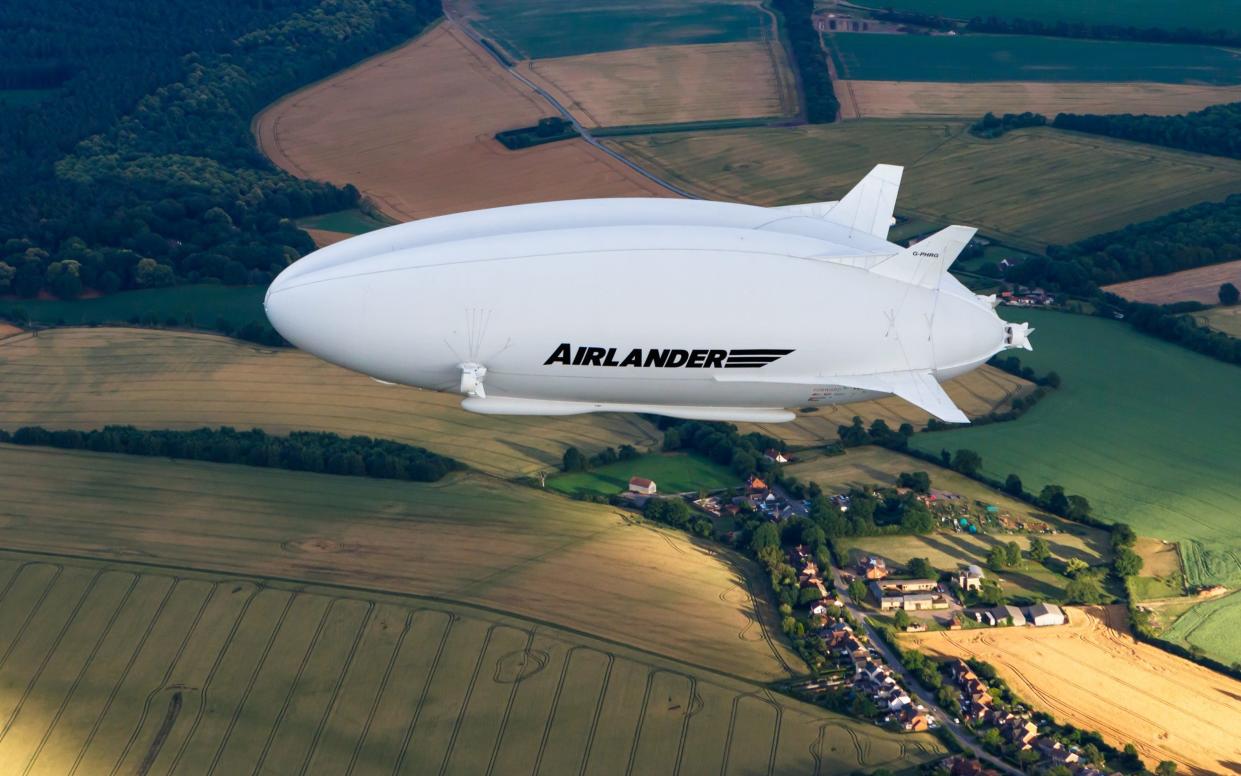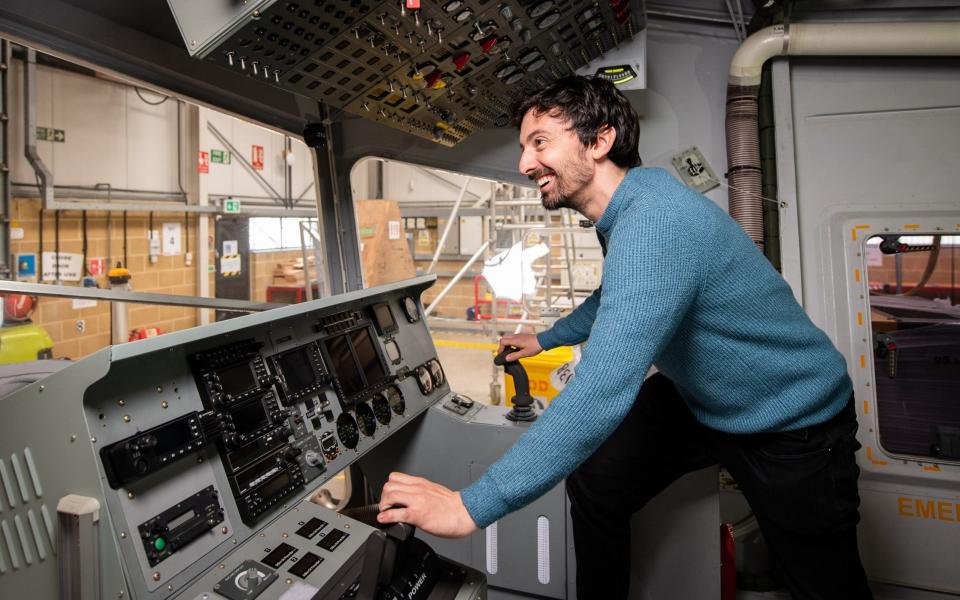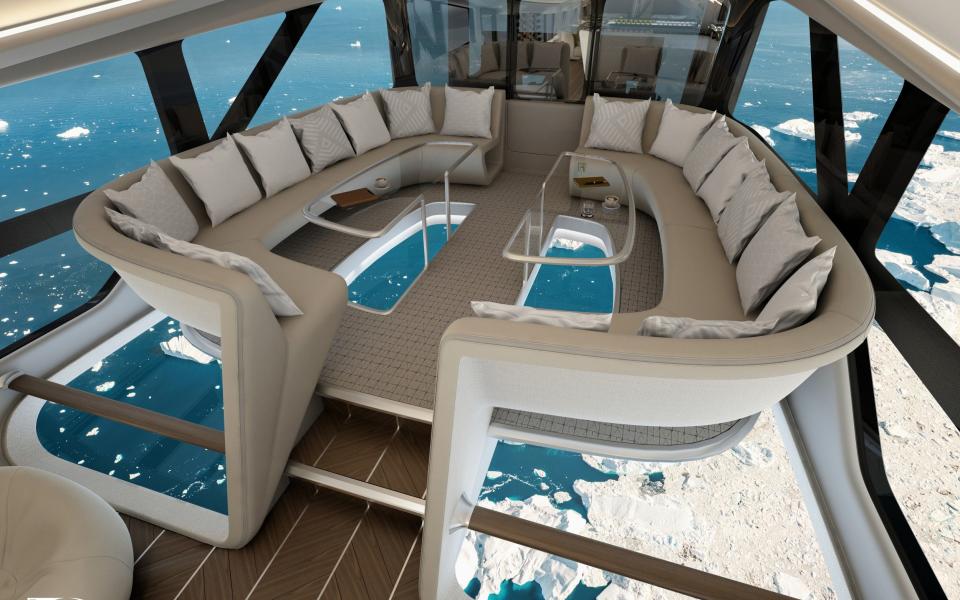A new way of travelling is coming sooner than you might think

“You really need to point the nose up now, we’re losing altitude fast.”
A lapse in concentration. I pulled back the throttle, directing the nose of the aircraft towards the clear blue Californian sky. The numbers on the altimeter slowly crept up and my co-pilot Andrew looked relieved as I levelled out the aircraft and we continued our lap of San Francisco.
Sort of.
I was actually at the controls of a brand new generation of airship – or rather a “hybrid aircraft” which looks a lot like an airship – in a flight simulator on the outskirts of Bedford.
My view may have been computer-imagined but in just three years these leviathans will take flight with passengers on board. Spanish regional operator Air Nostrum plans to put them into service by 2026, and luxury cruise operators are in discussions about placing orders.

Which is no surprise, really. Who can resist the prospect of a sustainable, luxurious, 300-foot long superyacht in the sky?
The outlook may be rosy now, but it was a turbulent start for Hybrid Air Vehicles (HAV), the UK company behind the world’s longest aircraft. In 2016, their first prototype Airlander nosedived in slow-motion during a test flight from Cardington Airfield in Bedfordshire, damaging part of the flight deck. This, and the fact that it resembled a derrière from certain angles, made far more headlines than the subsequent seamless test flights.
The following year, the day after another successful test flight, the “flying bum” broke free from its mooring mast, triggering a safety system which ripped open and deflated the hull.
If anything this proved the safety mechanisms worked, but these dramatic visuals of a downed airship brought back unwelcome memories of the Hindenburg disaster of 1937. Because even though the Airlander uses different technology to airships – a combination of aerodynamic lift (its shape), buoyant lift (helium) and vectoring engine power for take-off and landing – the comparisons will always be there.
Despite the hurdles, the Airlander project continues to propel forwards. After the incidents the company redesigned the prototype aircraft incorporating many improvements, including the addition of an Air Cushion Landing System, allowing the ship to land on any reasonably flat surface via six inflatable studs.
And these squishy feet form a central part of the aircraft’s appeal. It doesn’t require a runway to take off but just a relatively flat, circular airfield: land or water. Ergo, no more airports. And because it moves at far slower speeds than planes (a top speed of 100 mph compared to an average jet speed of 310 mph), the security protocols will be more like boarding a ferry or train.
“We’re working with Air Nostrum to create a network of city-to-city connections, much faster than a car, with 10 per cent of the carbon footprint of a flight, and affordable to the customer,” says Tom Grundy, CEO of Hybrid Air Vehicles. The Airlander will have a maximum capacity of 100 passengers; a typical Boeing 737-800 carries 189.
That’s all very well, you might think. But 100 mph isn’t very fast. While it is true that the Airlander is closer in speed to a car than a plane, when you remove airport congestion and factor in quicker boarding times, the overall journey time will be comparable to a short-haul flight, Grundy says.
There is also scope for creating brand new air connections; HAV is in talks with Highlands and Islands Enterprise and Loganair about how it could help to connect remote Scottish islands that are currently reliant on boats and fair weather.
The Airlander could be used for freight and cargo too, potentially cleaning up the carbon footprint of our national banana and coffee habits. But the million-dollar question, or $750 million if you factor in the full order book for Airlanders, is what the experience will be like for the passenger.
After sidestepping a major incident in the simulator and surprising both myself and my co-pilot with a soft landing, I went to the nearby hangar where HAV keeps its equipment.

There’s a cockpit, a giant propeller, and also a kitted-out prototype of one of the luxurious cabins. Wine glasses hang confidently from above the bar area, as if to make a point that a smooth ride awaits. Down the corridor of this particular model will be eight en-suite bedrooms sleeping 16 passengers.
It felt more like a compact hotel than a flight, with bar stools, mood lighting and a coffee machine. It’ll be quiet in the cabin too, given that the engines are far away, and passengers won’t have to worry about turbulence experienced on planes. You can even open the windows.
“It’ll be more like travelling on a cruise ship than a plane,” says Grundy.

As a result the Airlander offers a tantalising possibility for luxury cruise operators. With no restrictions on where the aircraft can take off and land, and with the capacity to stay in the air for up to three days, we could see the arrival of aerial safaris above the Serengeti, immersive Northern Lights experiences in the high Arctic.
Places unconnected by road suddenly become accessible. Hybrid Air Vehicles remain tight-lipped about which companies aside from Air Nostrum have placed orders, but we do know they aim to deliver all of the existing Airlander orders by 2026.
Will people pay a premium for this sort of experience? Jenny Southan, CEO of travel consultant GlobeTrender, says that “clean tech expeditions” are a luxury travel trend on the rise. “The emergence of helium-filled, electric-powered airships will be the perfect example of how this trend will be manifesting,” she says.

This month, that vision came a step closer when South Yorkshire’s mayor Oliver Coppard pledged a £7 million investment into the Airlander’s Doncaster production facility. It is here that HAV will produce its first fleet of Airlanders, rising to 24 per year by 2028.
And the potential for reaching net zero is real, too. Already the Airlander produces between 75 and 90 per cent less emissions per passenger per mile than a plane, but the supersized aircraft has the capacity to be kitted with electrical motors and hydrogen fuel cells, once the technology becomes readily available.

“We will have a long-range, high-capacity electric aircraft before anybody else will,” says Grundy, who sets 2030 as the date for their first zero-carbon flight.
Whether this majestic ship will be cruising above a desert plain, frozen sea or a glistening cityscape is unknown. But no doubt there will be plenty of clinking glasses on this, the world’s first truly green passenger flight. Bottoms up.

